The Great Divide: Hospital staff reveal hospital horror stories in calls for funding
Southwest Sydney hospital patients experience a ‘Great Divide’ when comparing healthcare services to their eastern suburbs neighbours, writes Jake McCallum
Macarthur
Don't miss out on the headlines from Macarthur. Followed categories will be added to My News.
Veteran paediatrician and Macarthur federal Labor MP Dr Mike Freelander will never forget one particular patient, a 12-year-old girl suffering from an extreme case of anorexia.
“This young girl was admitted to Campbelltown Paediatrics in a very serious condition” Dr Freelander says.
“We knew she desperately required intensive treatment and tube feeding or she wouldn’t survive, so we applied to transfer her to both Westmead and Randwick Children’s Hospital because we didn’t have the resources to provide such intensive treatment.
“Both hospitals refused this little girl, who desperately needed specialist resources to survive. — She almost died in Campbelltown Hospital because we didn’t have the resources to care for her.”
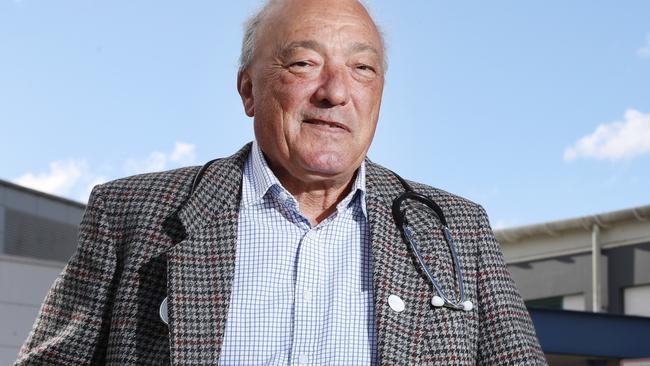
THE GREAT DIVIDE — SYDNEY’S HEALTH CRISIS
Part One: south west patients funded $800 less per person than Sydney residents
Part Two: south west patients forced to travel hours for treatment
Part Three: leaders are calling for a new hospital at Aerotropolis
Part Four: 24,000 new medical students needed to fight west’s growth
Part Five: Patients waiting 300 days for surgery in south west Sydney
Part Six: south west teens shock youth suicide numbers as specialist staff numbers revealed
Part Seven: Claims health department removed beds from state’s busiest EDs
Part Eight: Where mini-metro hospitals will be built across Sydney
Part Nine: Kids enduring 18-month wait times for paediatric services
The former head of the Campbelltown Hospital Paediatric Department, now runs a free clinic for children out of the hospital. He has been among the most prominent voices calling for increased funding to improve localised health services for a population expected to balloon out to more than 1.5 million in the next 10 to 15 years with the completion of the Western Sydney Aerotropolis.
Communities across southwest Sydney have long considered themselves as the city’s forgotten people — but when it comes to the state’s healthcare system this belief is a sad and cruel reality.
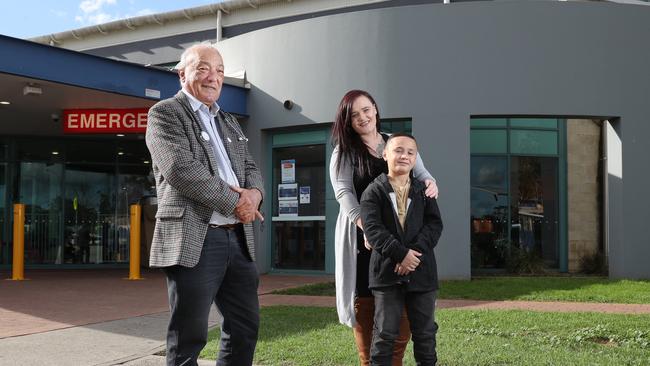
The Daily Telegraph’s Great Divide campaign has, over the past two weeks, heard from frustrated clinicians, desperate community groups and outraged patients who tell of a series of systematic shortfalls in resources across southwest Sydney, which continues to place excessive strain on staff desperately calling for support.
The same staff who are working to save lives while budgeted $800 less per capita than nearby Sydney Local Health District each year, while watching on in shock as the NSW Government removed treatment space from what is recognised as the state’s busiest emergency department in Campbelltown and Camden hospitals.
As an example of just how great the gap is between health care in the inner city and out west, patients must wait 310 days for their procedure at Liverpool Hospital.

Those at the Royal Prince Alfred Hospital in inner Sydney are operated on in just 22 days.
And behind every one of these horrific waits is a devastating story of patient whose life was put on the line because of shortfalls experienced everyday in hospitals within the South West Sydney Local Health District network.
LIVES PUT AT RISK
The NSW Parliamentary Inquiry into the current and future health provisions of South West Sydney has revealed patients are forced to travel for hours each day to receive treatment for services relating to cardiology, haematology and neurology, as well as gastroenterology and urology in other local health districts due to a lack of localised specialist outpatient services.
The federal MP is one of dozens of clinicians continuing to tell heartbreaking stories where patients lives were on the line because of the systematic lack of resources offered.
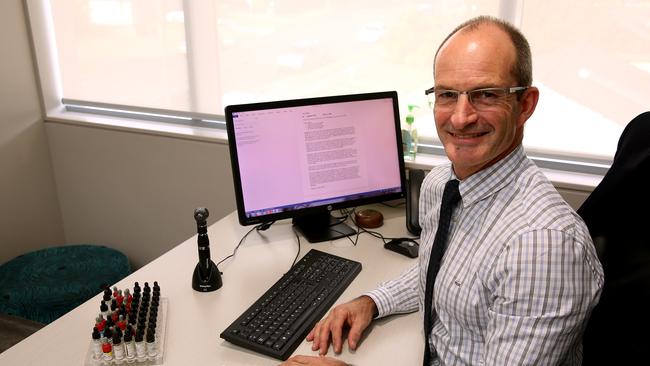
Another frustrated clinician, former NSW president of the Australian Medical Association, Professor Brad Frankum, says he stepped down from management roles in South West Sydney Local Health District due to the level of shortfalls in resources.
The senior staff specialist immunologist at Campbelltown and Camden hospitals said his colleagues are hamstrung by “consistent and countless resource deficiencies resulting in detrimental patient care”.
“There is no light at the end of the tunnel for hospitals in this Local Health District,” Prof. Frankum says.
LACK OF RESOURCES
Frankum recalls a horrifying example of the extreme lack of resources offered throughout the south-west Sydney health district during his time treating a 16-year-old girl suffering from a medical episode.
“This young girl was admitted under my care with a very rare brain condition that results in a mixture of haematological and immunologic issues,” Frankum says.
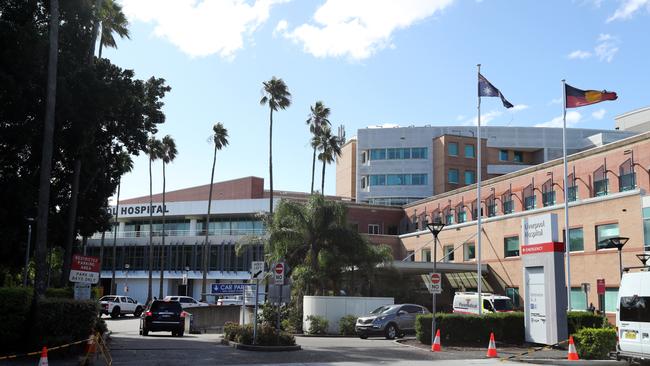
“I wanted advice on how to treat her by the LHD network’s Haemotology team. — in most hospitals a senior clinician would be able to speak to someone in that department at their own hospital, but that isn’t the case in SWSLHD.
“I had to contact the senior specialist at Liverpool Hospital but was told by the switchboard and the registrar that they were not available to me — directing me to the Children’s Hospital at Westmead because Liverpool ‘doesn’t treat children’ suffering from a rare disease such as this one. “
He says although he made the appropriate decisions, patients lives are left to chance, “because NSW Health treat southwest Sydney clinicians like second class citizens”.
Evidence submitted to the inquiry also uncovered southwest Sydney had the lowest number of specialist staff psychiatrists in any metropolitan district, despite the fact the region makes up 10 per cent of the state’s youth suicide numbers each year.

While Western Sydney University revealed the need for a massive 24,000 medical graduates to cope with the demand for healthcare across the city’s western suburbs by 2039 as One Nation Upper House MLC Mark Latham and Western Sydney Leadership Dialogue director Adam Leto call for a new hospital to be built at the Aerotropolis.
Mr Leto says projected population numbers resulted in a strong case for a new hospital and entire local health precinct to be based out of the growth area.
In response to the growing demand for expanded medical services across southwest Sydney, the leadership dialogue established a consortium of public and private sector organisations to create the Campbelltown Health and Education Precinct Collaboration.

Participants for the multimillion-dollar project in southwest Sydney include the local health district, South West Sydney Primary Health Network, Western Sydney University, Campbelltown City Council, Ingham Research Institute, TAFE NSW and the leadership dialogue.
Mr Leto says the collaborative team meets on a month basis to earmark investment, employment, education and urban renewal opportunities to service western Sydney, while improving the delivery of “quality clinical services and research that responds to the current and future health and education needs of the region”.
GROWTH AREA
The team is also working to meet ambitious targets of 31,000 jobs within the precinct by 2036, while rallying to improve transport accessibility from the Health and Education precinct to the Western Sydney Aerotropolis and greater western Sydney.
“Campbelltown Health and Education Precinct is the largest of Western Sydney’s five health and education precincts in land size,” Mr Leto says. “ The area is currently home to Campbelltown’s public and private hospitals, Western Sydney University Campbelltown Campus, the Macarthur Clinical School and TAFE NSW Western Sydney.
“The precinct currently houses more than 15,000 students, with Western Sydney University enjoying a strong health focus linked to the hospitals and centred around its Schools of Medicine, Nursing and Midwifery.”
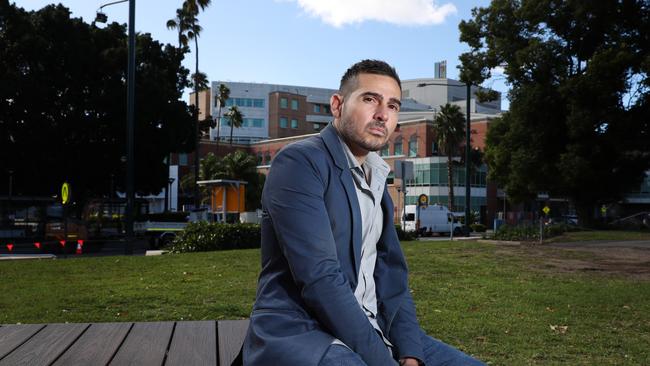
Mr Leto revealed the consortium recently partnered to announce the delivery of the Lang Walker Macarthur Medical Research Centre. — a cutting-edge facility bringing together clinical expertise, research and innovation, focused on some of the region’s most pressing health conditions such as diabetes, mental health, Indigenous health, paediatrics and cancer.
NSW Health Minister Brad Hazzard was contacted for comment on the concerns of the submissions made to the inquiry. A spokeswoman for the minister said the department would respond to the inquiry at its completion, and will not “be making a running commentary”.
A NSW Health spokesman told Saturday Extra the department was “monitoring the inquiry closesly” and will consider the reccommendations.
“With almost $3 billion committed to hospital redevelopments in the LHD, including $740 million specifically for the new Liverpool Health and Academic Precinct (LHAP) Health and Academic Precinct (LHAP), South Western Sydney Local Health District (SWSLHD) is extremely well positioned to serve the health care needs of the growing community,” he argues. “In addition, SWSLHD will also benefit from the NSW Government’s $2.8 billion commitment to recruit a record 8,300 frontline health staff over the next term, including 5,000 additional nurses and midwives.
“The 2019-20 budget for SWSLHD is almost $2 billion, an increase of nearly $94 million on the previous financial year’s budget.”
WEST DEMANDS EQUAL FUNDING IN HOSPITAL BUDGET BUST UP
Jake McCallum - OPINION
NSW Health says comparing elective surgery and emergency department wait times in greater western Sydney to our neighbours in the east is “like comparing apples and oranges”.
But what I want to know is — which one I am?

Personally, I am not a fan of citrus fruits so I consider myself, and the rest of our city’s west, as the apple in this scenario.
But does that mean, as an apple, I get cut-price healthcare that sees a dramatically reduced rate of clinical funding, extreme staffing shortages and wait times that could see me enduring pain for close to a year before I get the same treatment a certain eastern suburbs orange had 22 days after joining the waitlist?
As an apple, should I be told that I have to commute for hours in order to receive the best possible treatment, or should that high-quality health option be made available to me close to my home, so I don’t give up on what could be lifesaving services?
I can speak first-hand about giving up on treatment for my heart condition, all because of the time it took to reach my doctor for appointments.
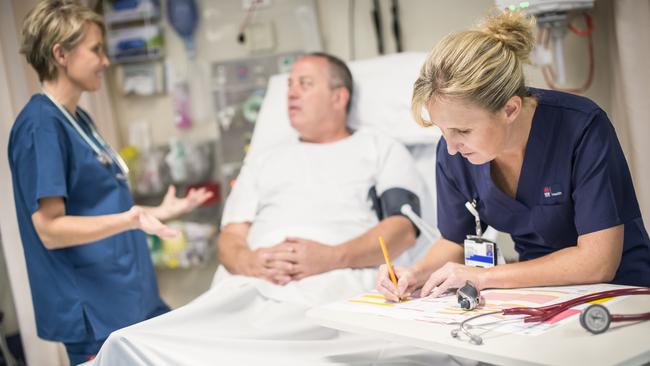
So I feel I can vouch for the need for more localised specialist options at our hospitals, which are only expected to grow with the NSW Government masterplan for planning, population and density growth in the communities we call home.
If that is the case, where comparing one hospital to another is an “apples and oranges” scenario, then the NSW Government and others across the country need to reassess the way our hospitals are funded: make a fruit salad – for the sake of the analogy.
Frustrated directors, struggling clinicians and the patients they treat have used the NSW Parliamentary Inquiry into the current and future provisions of health services in the South-West Sydney Growth Region as a stark warning of the future nightmare we western Sydney residents will face when visiting our hospitals.
With each detailed, and frankly frightening, submission entered into the inquiry I have seen time and time again an urgent call for more funding for Western Sydney hospitals.
Yes, the NSW Government has rolled out an impressive list of bricks and mortar Health Infrastructure projects, some of which our state has never seen before.
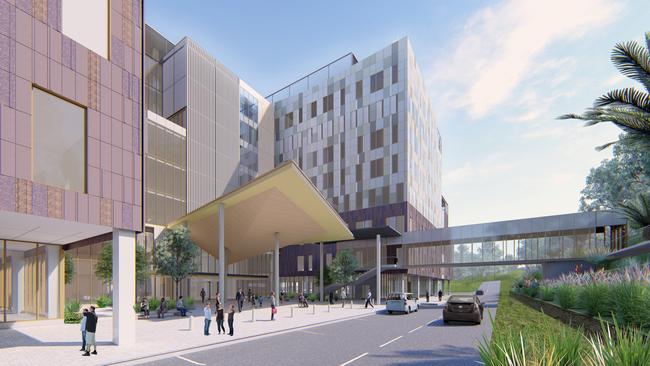
But if there isn’t the staff to fill the wards, these new facilities will continue down the same path we currently face.
One clinician, who did not wish to be named, this week told me the funding they are asking for “isn’t even about future-proofing the hospital for expected growth” – it was so they could start to meet the current needs of patients.
Hospitals close to the epicentre of Australia’s largest city are citing a lack of funding for department heads to oversee the prevention of more babies dying in their care, and yet there is no funding to make this a reality.
It is time for the NSW Government to reassess our options — part ways with an unfair funding model that favours a hospital’s history and geographical location in Sydney’s east.
For a new model that appropriately addresses the needs of developing regions while providing localised, specialist care that is easily accessible for all.
I shouldn’t have to be an orange in Sydney’s eastern suburbs to get the treatment every patient deserves.

